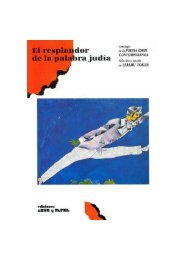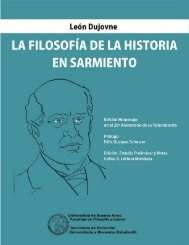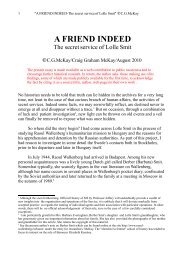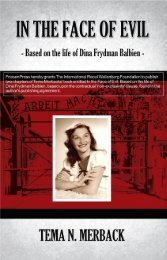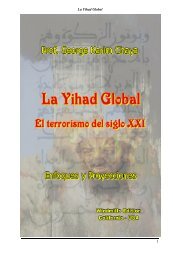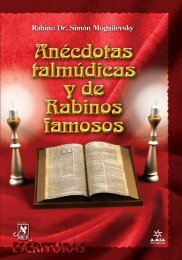Brothers For Resistance And Rescue By David Gur
Brothers For Resistance And Rescue By David Gur
Brothers For Resistance And Rescue By David Gur
- No tags were found...
You also want an ePaper? Increase the reach of your titles
YUMPU automatically turns print PDFs into web optimized ePapers that Google loves.
estimated that about 15,000 Jews crossed the border and that most of them reached Eretz Israel(Palestine) already in 1944. This operation was in fact discontinued at the end of August with thechange of regime in Romania. In the same way about 400 members of the youth movements weresmuggled into Slovakia where, in August 1944, they joined the Slovak uprising. Most of them fell inbattle.The bunkersMost bunkers were set up in Budapest and the environments after the end of the “tiyul” operation.The bunkers were established in apartments, caves and cellars that were made fit for this purposeby the movements’ members. The idea of establishing bunkers was born as a result of theexperience of the Zionist movements in Poland which was transferred to Hungary by theirmembers who arrived as refugees. They were meant to be used as hiding places and storageplaces for equipment, food and even weapons. However, very soon it became clear that most ofthe bunkers were traps for their occupants and, therefore, these preparations were stopped. One ofthe bunkers on Hungary Boulevard in Budapest was discovered and attacked by the fascists. Theguard who stood outside was shot dead and the other members were caught.The children’s houses under the protection of the International Red CrossFifty children’s houses were established in Budapest, most of them after 15.10.1944 when thefascist Arrow Cross Party rose to power. In those houses abandoned Jewish children, childrenwithout a father or mother and orphaned of both parents, who had been either murdered ordeported to the camps, found a refuge. Friedrich Born, the representative of the International RedCross in Hungary, put the offices of his organization in the center of Budapest at the disposal of“Department A” headed by Ottó Komoly, the president of the Hungarian Zionist Association.Komoly was the founder of the department. The Zionist youth movements located apartments andhouses where the children they collected could live. The people in charge of the children’s houseswere members of the movements aged around twenty whereas the caregivers were seventeeneighteenyears old. There were some incidents with the fascists and even casualties but most ofthe children’s houses managed to function until the liberation of the city in the middle of January1945. Almost 6,000 children and also adults who joined them were saved in the children’s houses.The children continued to be taken care of even after the war and many of them made aliya.The smuggling and liberation from forced labor units and prisonsMany of the underground activists from the Zionist youth movements were caught by the Germansand the Hungarian fascists and efforts were continuously made to liberate them. Daring operationswere undertaken with success. In some of these operations the underground members wore thefascist uniform and even used weapons. A group of 120 members of the Zionist underground, whowere going to be executed, were liberated at the end of December 1944 from the centralHungarian military prison on Margit Boulevard. Members of the movements and other people wererescued from the forced labor units, reached Budapest and joined the underground activities.<strong>Brothers</strong> for <strong>Resistance</strong> and <strong>Rescue</strong> 15







